You will need
- Eggs
- Selection of soft drinks (we used orange juice, fizzy water, cola and an energy drink)
- Tap water (this acts as a control, for comparison)
- Enough glasses or mugs for each drink
- Sticky labels
- A toothbrush
Instructions
- Collect a selection of soft drinks.
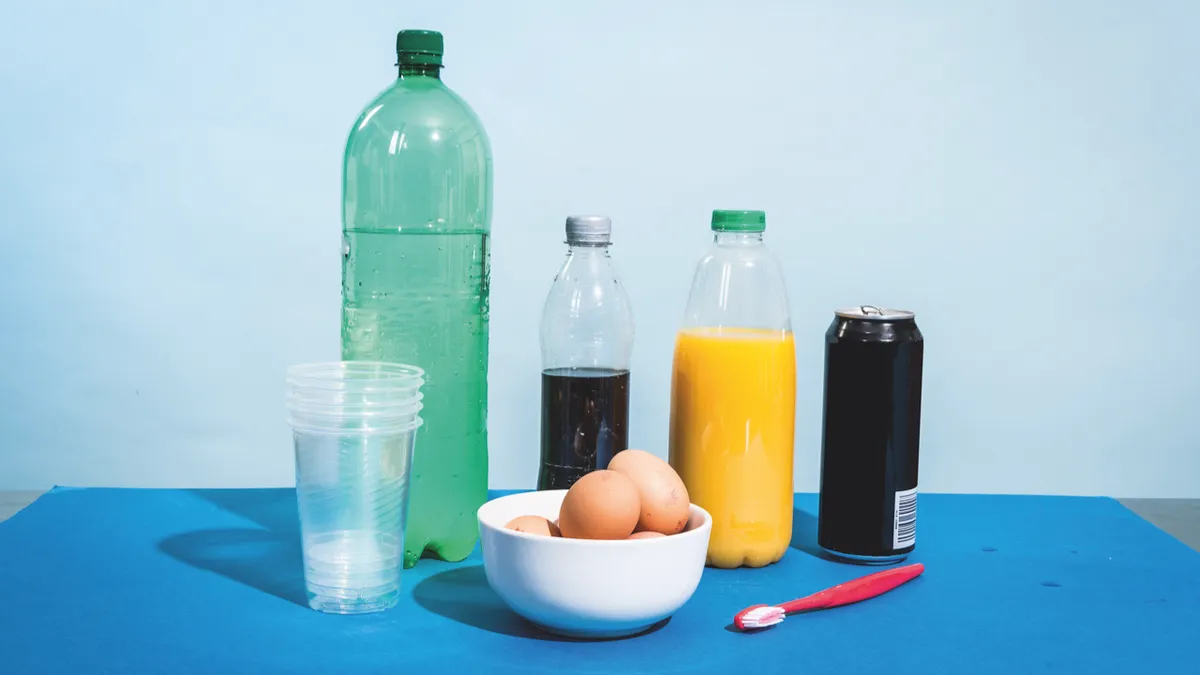
© Steve Sayers/The Secret Studio - Pour enough of each drink into separate glass to completely cover the egg. Don’t forget to include one with tap water. Label each glass and leave overnight.
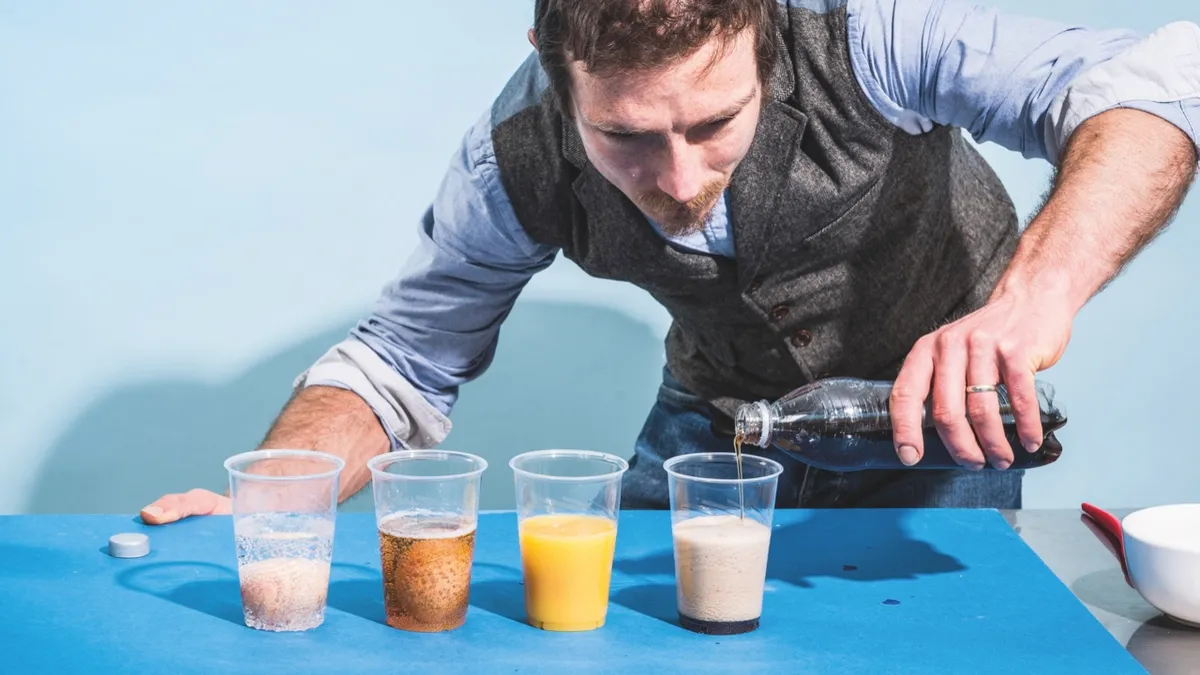
© Steve Sayers/The Secret Studio - Leave for a week to witness even more dramatic results!
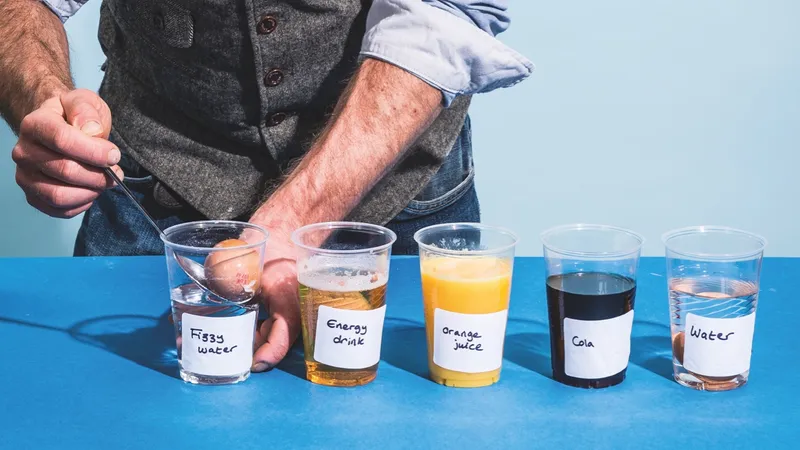
- Carefully remove each egg to examine the shell.
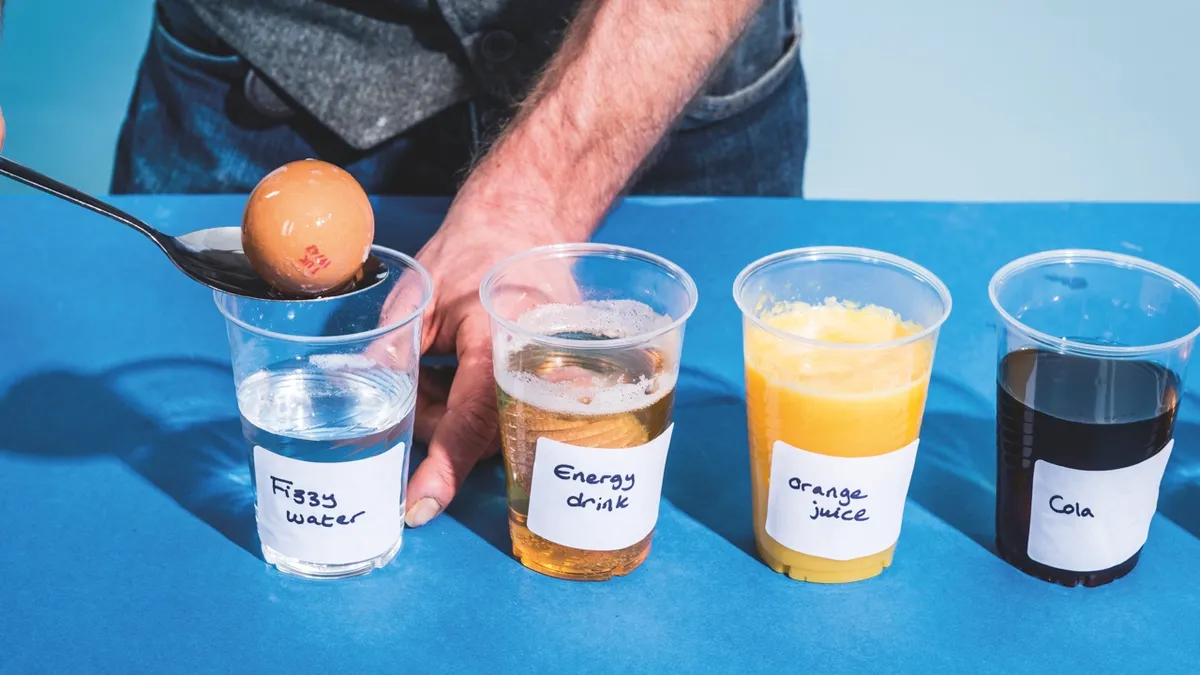
© Steve Sayers/The Secret Studio - Rub gently with a toothbrush to simulate the effect of brushing your teeth after exposure to the acidic drinks.
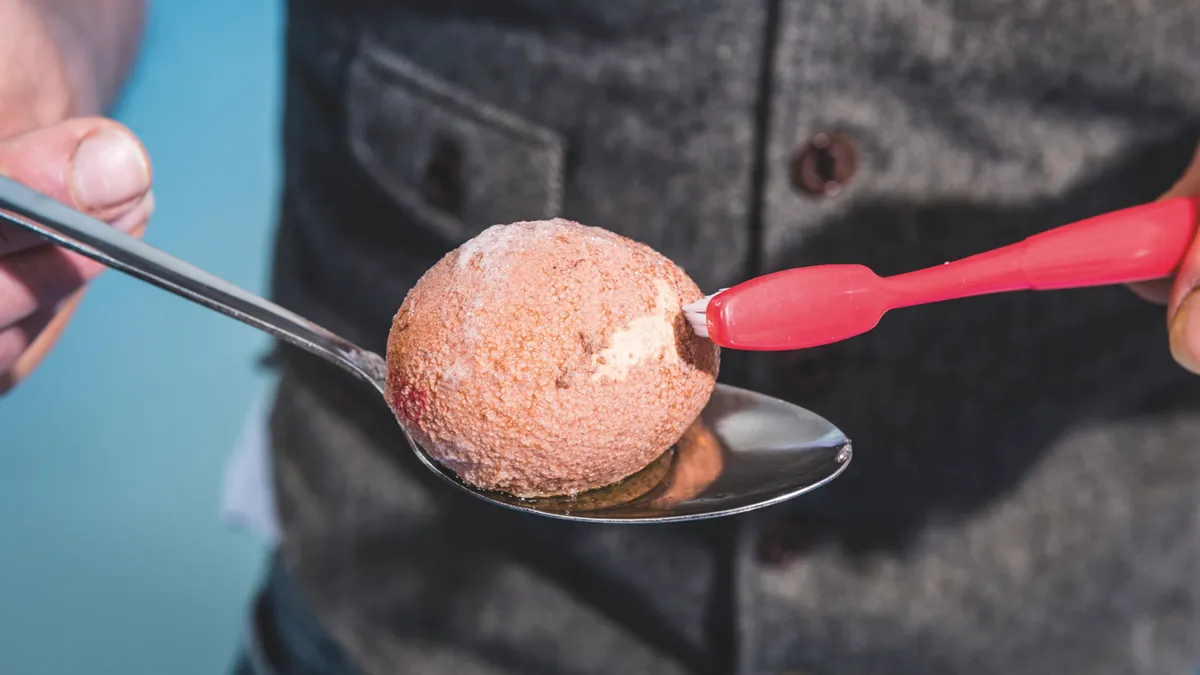
© Steve Sayers/The Secret Studio
What’s going on?
Egg shells are made of calcium carbonate – a hard mineral that is similar to calcium phosphate, the substance our teeth are made of. Acids react with calcium carbonate, breaking it apart into calcium (which is carried off in the water) and carbon dioxide gas. The more acidic a liquid is, the faster the reaction and the more the shell will weaken. The bubbles and froth that form on the egg and on the surface of the liquid are carbon dioxide gas, showing that the mineral is quite literally ‘fizzing’ away in the tart-tasting liquid.
The results may shock you: orange juice, which is typically seen as a ‘healthy’ drink, is naturally high in citric acid and causes more dramatic changes than cola. Fizzy water is also acidic because it contains dissolved carbon dioxide, which forms carbonic acid. Commercial soft drinks are remarkably corrosive because manufacturers add extra acids to give them a ‘tang’. But it’s energy drinks that are consistently among the worst offenders, typically being as acidic as vinegar.
Read more:
- DIY Science: how to get electricity from coins
- DIY Science: how to create a bottled cloud
- DIY Science: how to make elephant toothpaste
Follow Science Focus onTwitter,Facebook,InstagramandFlipboard